by Sonam Srivastava
Published On June 15, 2024
India is the world's third-largest producer of renewable energy, highlighting its commitment to sustainable development. With a total installed capacity of 400 GW as of 2022, 40% (160 GW) comes from renewable sources. This significant share of renewables in the energy mix underscores the nation's strategic shift towards clean energy.
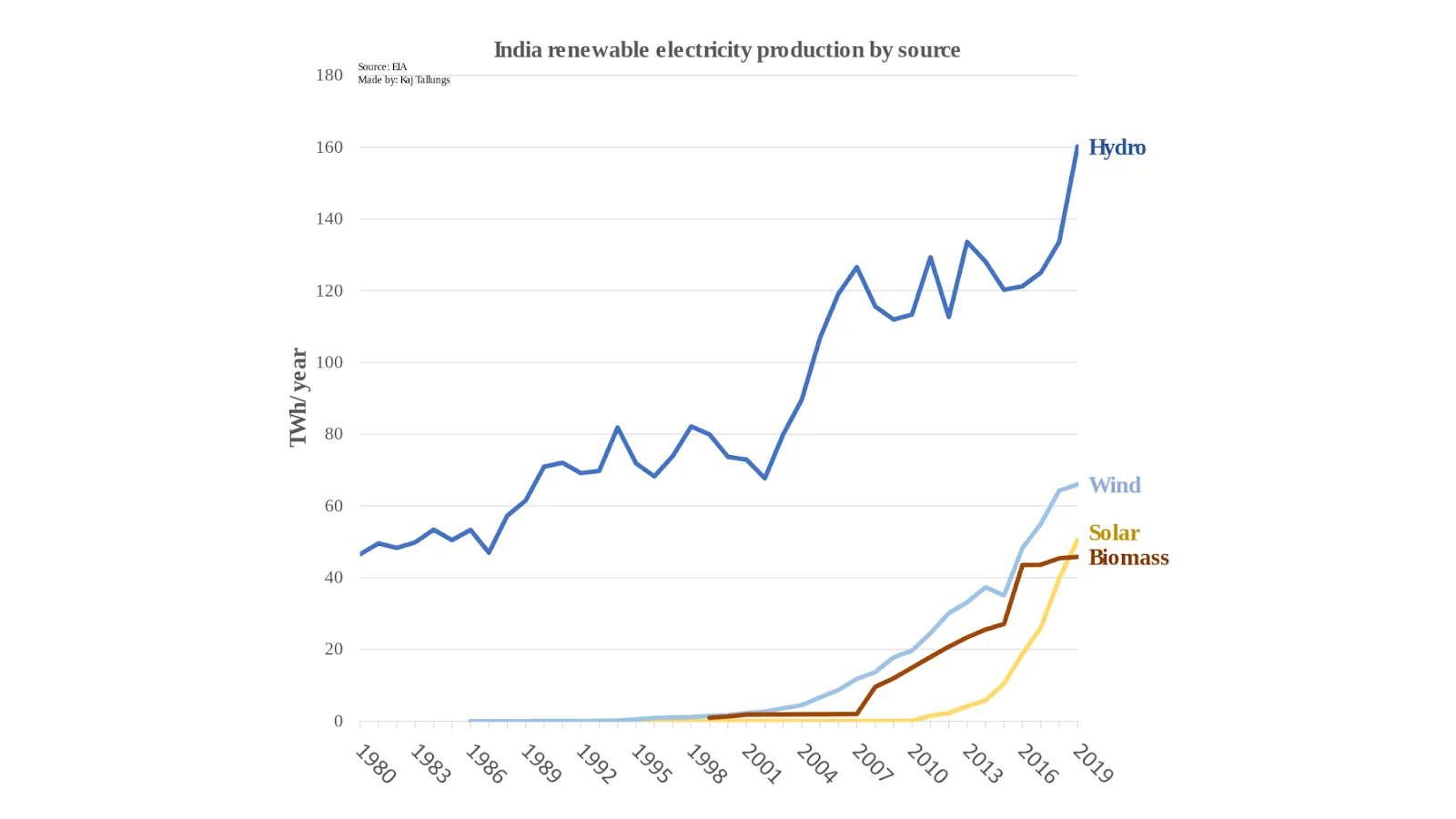
Renewable energy is pivotal to India's energy strategy, offering numerous benefits:
Environmental Benefits: Renewable energy reduces greenhouse gas emissions and combats climate change, contributing to a cleaner environment.
Energy Security: By harnessing abundant domestic resources like solar and wind, India reduces its dependence on imported fuels, enhancing energy security.
Economic Growth: The renewable energy sector creates jobs, stimulates technological advancements, and attracts both domestic and foreign investments.
The Indian government has set ambitious targets to accelerate the transition to renewable energy:
500 GW of Renewable Energy by 2030: India aims to achieve a renewable energy capacity of 500 GW by 2030, a substantial increase from the current 119 GW. This target underscores the government's commitment to expanding the renewable energy infrastructure.
50 GW Tenders in FY2023-24: In a bid to expedite the growth of renewable energy, India plans to issue 50 GW tenders for wind, solar, and hybrid projects in the fiscal year 2023-24. This initiative is expected to attract significant investments and drive the development of new projects.
Recent achievements include:
EY's 2021 Renewable Energy Country Attractiveness Index: India was ranked 3rd globally, behind the USA and China, in Ernst & Young's (EY) 2021 Renewable Energy Country Attractiveness Index (RECAI), reflecting the country's favorable investment climate and policy support for renewable energy.
Growth in Renewable Energy Capacity: With a current renewable energy capacity of 119 GW, India has made substantial progress in solar, wind, and hydro power sectors, reflecting its strong policy framework and strategic initiatives.
These targets and achievements demonstrate India's robust approach to promoting renewable energy, positioning the nation as a global leader in the clean energy transition.
India's geographic location makes it one of the most solar-rich countries globally. With approximately 300 sunny days per year, India has an estimated solar energy potential of about 750 GW. The Indian government has set ambitious goals to harness this potential, driving rapid growth in the solar power sector.
These key players are instrumental in driving the solar energy sector in India, leveraging technological advancements and favorable government policies to expand their operations and contribute to India's renewable energy goals.
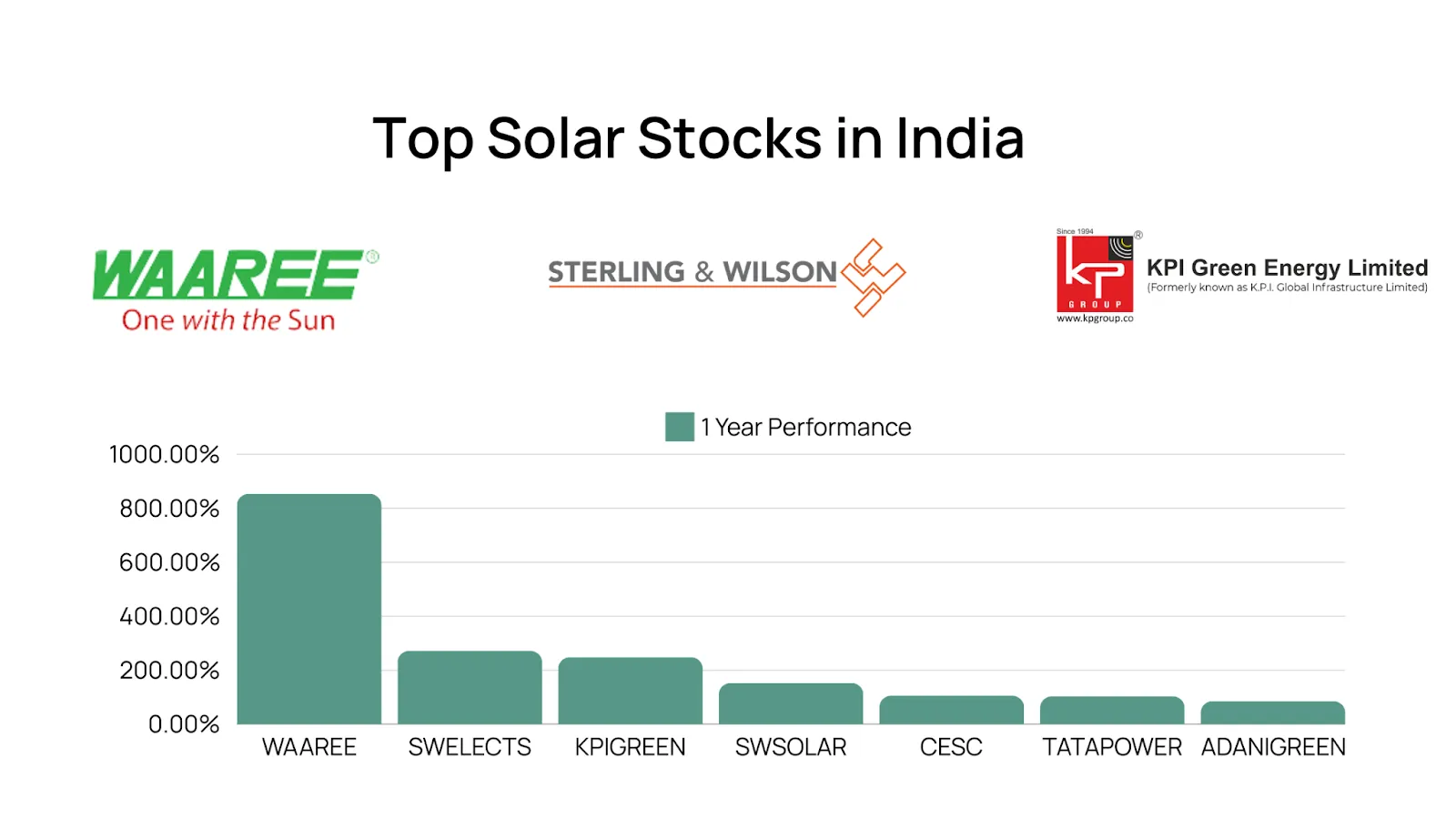
India has a vast coastline and several windy regions, making it highly suitable for wind energy generation. The country has an estimated wind energy potential of about 302 GW at 100 meters above ground level. This potential is being actively harnessed to complement the country's renewable energy mix.
These companies are pivotal in advancing wind energy infrastructure in India, contributing to the country's renewable energy targets through innovation and extensive project development.
Hydropower plays a crucial role in India’s energy mix, providing a stable and reliable source of renewable energy. It accounts for a significant portion of the country’s renewable energy capacity, helping maintain grid stability and supply during peak demand periods. However, hydropower faces challenges such as siltation, limited new dam construction sites, environmental concerns, and displacement issues.
These key players are essential in harnessing India’s hydropower potential, addressing the challenges, and ensuring the stable contribution of hydropower to the nation’s renewable energy mix.
India is on a transformative journey toward expanding its renewable energy capacity to meet the growing demand for electricity sustainably. The government's ambitious targets reflect a strong commitment to enhancing the share of renewables in the energy mix. By 2030, India aims to achieve 500 GW of installed renewable energy capacity, a significant leap from the current 160 GW. This expansion is fueled by favorable policies, technological advancements, and decreasing costs of renewable energy technologies.
Solar and wind energy are leading this growth, with solar power contributing approximately 50 GW and wind power about 40 GW. The rapid increase in renewable energy capacity is driven by government initiatives, such as the Production-Linked Incentive (PLI) schemes and Viability Gap Funding (VGF), which provide financial support to make renewable projects viable. The issuance of green bonds has also become a popular method for raising capital, attracting a wide range of sustainable investments.
Investment in renewable energy projects is surging, driven by both domestic and international investors. Government schemes and incentives play a crucial role in attracting investments. Production-Linked Incentives (PLI) aim to boost domestic manufacturing of solar photovoltaic modules and other renewable energy components, while Viability Gap Funding (VGF) supports financially challenging projects.
Competitive auctions and policy support have enabled significant investments in expanding renewable energy portfolios. Large-scale developers and independent power producers are actively involved in building and operating renewable energy plants. These efforts are critical to achieving the ambitious renewable energy targets set by the government.
As the share of renewable energy in the grid increases, the importance of energy storage solutions becomes paramount. Energy storage systems address the intermittent nature of renewable sources like solar and wind, ensuring a stable and reliable power supply. They store excess energy generated during peak production times and release it during periods of low production or high demand.
Energy storage also enhances grid stability and reduces the reliance on traditional fossil fuel-based peaking power plants. This capability is vital for integrating a higher percentage of renewables into the energy mix and achieving long-term sustainability goals. The development of efficient and cost-effective energy storage solutions, such as lithium-ion batteries and pumped hydro storage, is crucial for the successful integration of renewable energy.
Several companies are leading the way in developing and deploying energy storage solutions. These companies are making significant investments in battery energy storage systems and other innovative technologies to support the growing demand for renewable energy integration. Their efforts are essential for ensuring a stable and reliable power supply, addressing the challenges associated with renewable energy variability.
To support the increasing renewable energy capacity, substantial investments are being made in power transmission and distribution (T&D) infrastructure. Upgrading and expanding the T&D network is essential for efficiently transmitting renewable energy from generation sites to consumption centers.
The development of smart grids, equipped with advanced technologies to monitor and manage the flow of electricity more efficiently, is a key focus. Smart grids facilitate better integration of renewable energy sources and enhance overall grid reliability. These investments are critical for modernizing the grid infrastructure and supporting the country's transition to a more sustainable energy future.
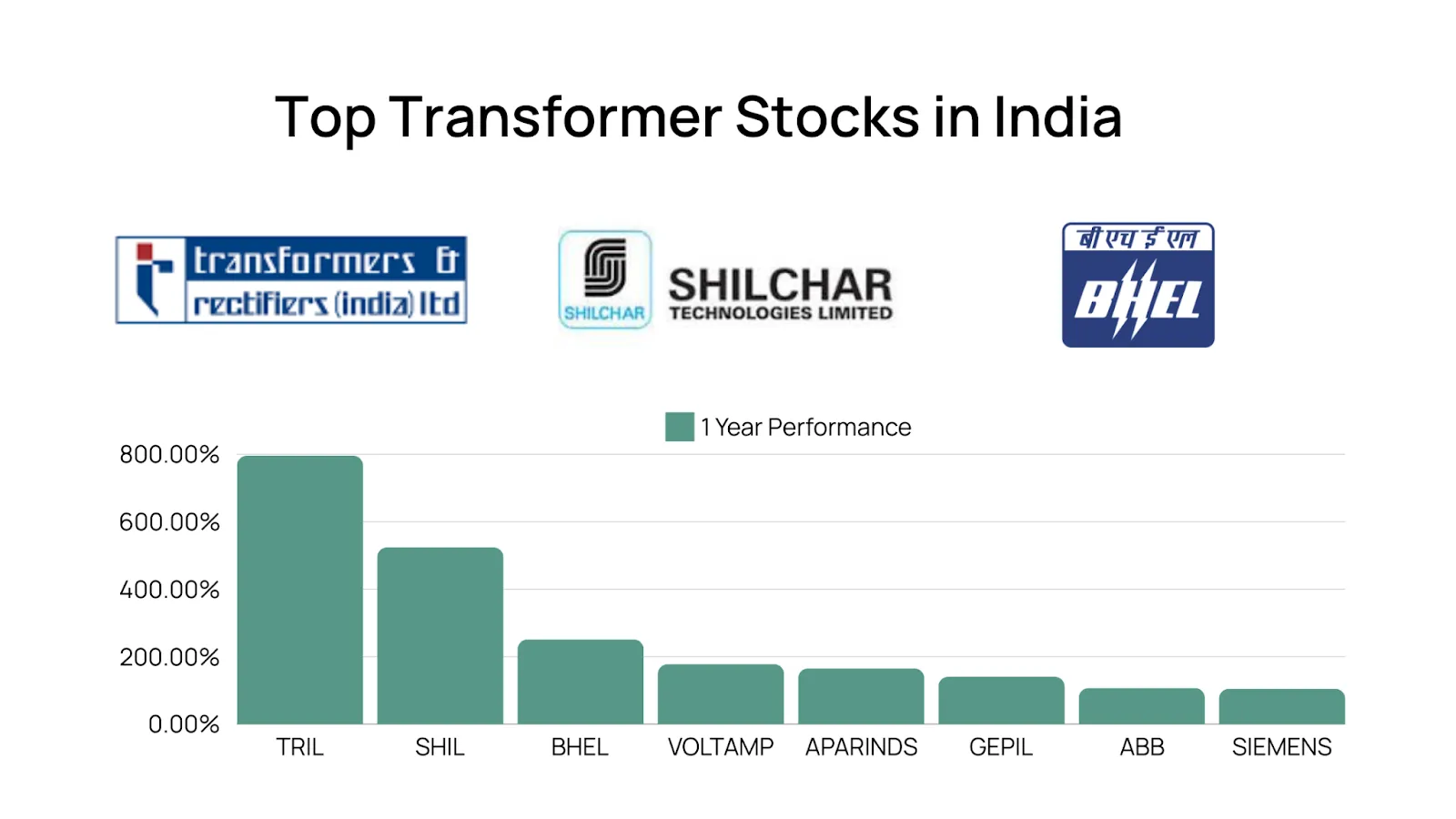
The growing renewable energy sector has led to a surge in demand for cables and wires, which are critical components of the T&D infrastructure. Companies in the cable and wire sector are experiencing increased demand as they supply essential materials for renewable energy projects and grid expansion.
The increased demand for cables and wires is driven by the need to connect renewable energy plants to the grid and distribute electricity efficiently. This demand is expected to continue growing as more renewable energy projects come online and the T&D network expands to accommodate the increased capacity.
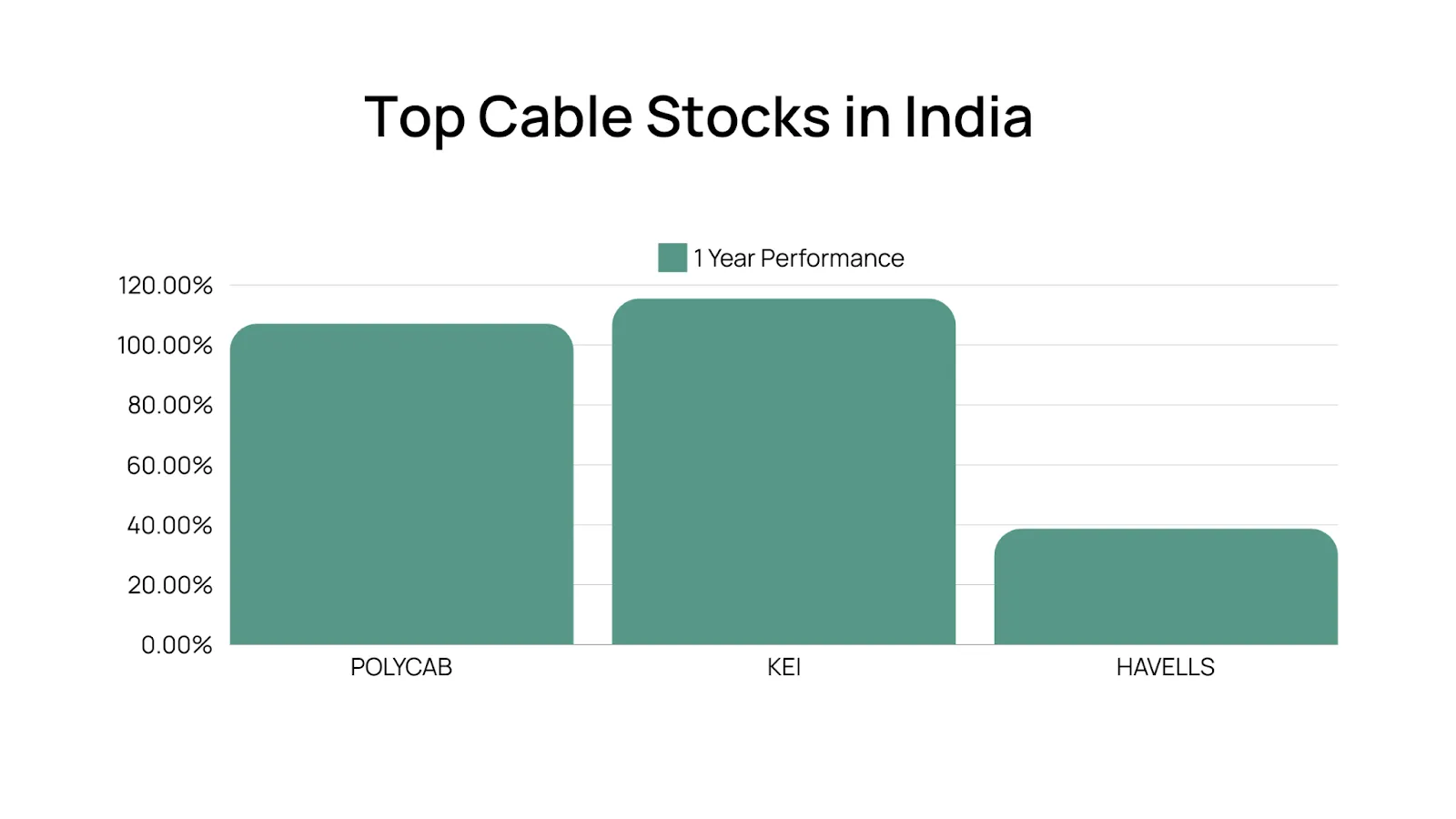
Power generation in India involves multiple methods, including nuclear, thermal, wind, and solar power. Each method plays a crucial role in meeting the country’s energy demands.
Nuclear Power: Nuclear power contributes to India's energy mix by providing a stable and reliable source of electricity. It is particularly valuable for its ability to generate large amounts of power with low greenhouse gas emissions.
Thermal Power: Thermal power, primarily from coal, remains a significant part of India's energy production. However, there is a growing focus on reducing the dependence on coal and shifting towards cleaner energy sources.
Wind Power: Wind power is harnessed through wind turbines installed in regions with high wind potential. Companies like Suzlon Energy Limited (SUZLON) and Inox Wind Limited (INOXWIND) are key players in this sector. Suzlon Energy has seen returns of 16.06% over the past month, 28.25% over three months, 31.84% over six months, and 263.53% over twelve months. Inox Wind has also performed well with returns of -4.31%, 25.22%, 44.60%, and 267.07% over the same periods.
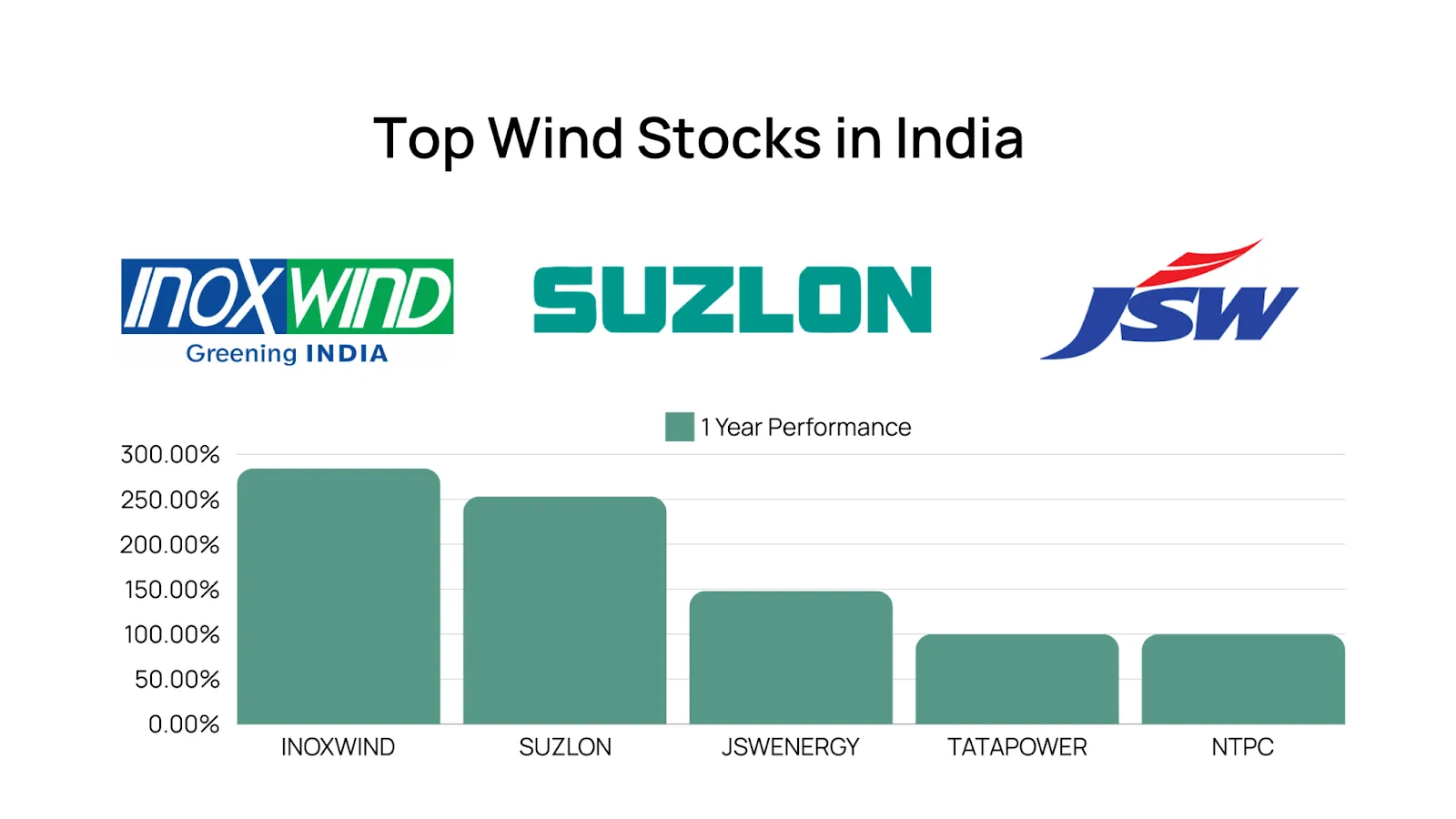
Solar Power: Solar energy is a rapidly growing sector in India due to its abundant sunlight. Companies like Adani Green Energy Ltd (ADANIGREEN) and Sterling and Wilson Renewable Energy Limited (SWSOLAR) are leading in solar power generation. Adani Green Energy has reported returns of -2.14% over one month, -3.47% over three months, 18.39% over six months, and 84.75% over twelve months. Sterling and Wilson Renewable Energy Limited has seen returns of -6.49%, 54.88%, 69.72%, and 152.33% over the same periods.
The transmission and distribution (T&D) of electricity involve transporting power from generation plants to end users. This process requires a robust and efficient infrastructure to handle the complexities of renewable energy integration.
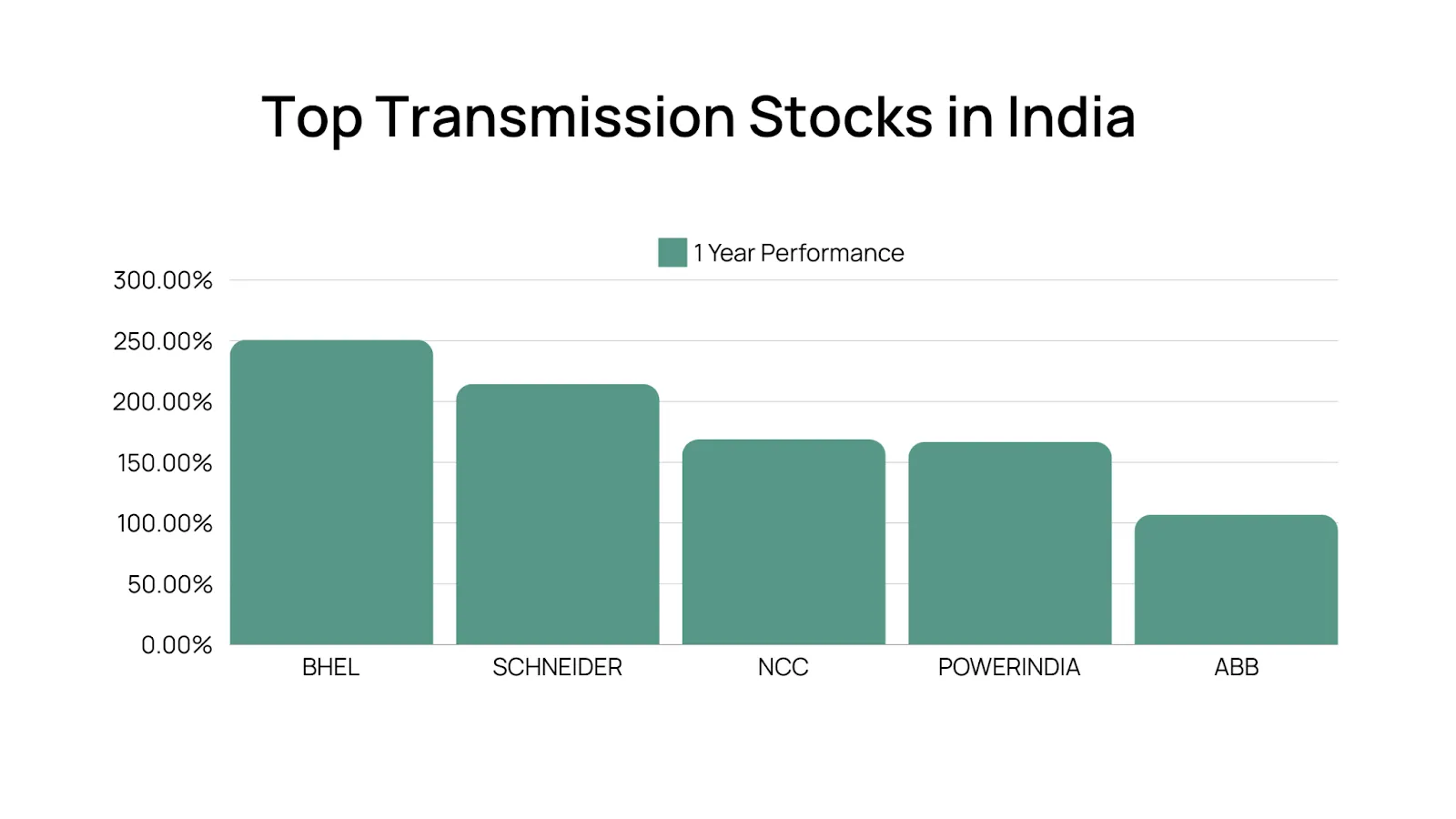
Infrastructure Requirements: Renewable energy sources like wind and solar are often located in remote areas, necessitating extensive T&D networks to bring the generated power to urban and industrial centers. Upgrading and expanding the existing T&D infrastructure is essential to accommodate the variable nature of renewables and ensure a stable supply of electricity.
Capital Expenditure: Significant capital expenditure is required to build and maintain the infrastructure for handling renewable energy. This includes investments in high-voltage transmission lines, substations, and smart grid technologies. Companies like Power Grid Corporation of India Limited (POWERGRID) and Tata Power Company Limited (TATAPOWER) are involved in these activities. Power Grid Corporation has seen returns of 2.88% over one month, 21.37% over three months, 38.67% over six months, and 66.02% over twelve months. Tata Power has reported returns of 3.35%, 14.19%, 33.07%, and 99.96% over the same periods.
The final stage of the green power sector value chain involves delivering electricity to end users and incorporating energy storage solutions to manage supply variability.
Energy Storage Solutions: Energy storage is crucial for balancing supply and demand, especially with intermittent renewable sources like wind and solar. Efficient storage systems can store excess energy during peak production times and release it when production is low. This capability is vital for maintaining grid stability and ensuring a reliable power supply.
Key Players in Energy Storage: Several companies are investing heavily in energy storage technologies. Tata Power Company Limited (TATAPOWER) is a major player in this sector, with notable returns as mentioned earlier. Reliance Industries Limited (RELIANCE), with returns of 3.53% over one month, 2.52% over three months, 17.07% over six months, and 15.10% over twelve months, is also expanding its footprint in energy storage. Other significant players include NTPC Limited (NTPC) and JSW Energy (JSWENERGY), which have seen returns of 1.95%, 16.19%, 21.54%, and 96.53%, and 14.53%, 37.36%, 56.10%, and 148.09% respectively over the same periods.
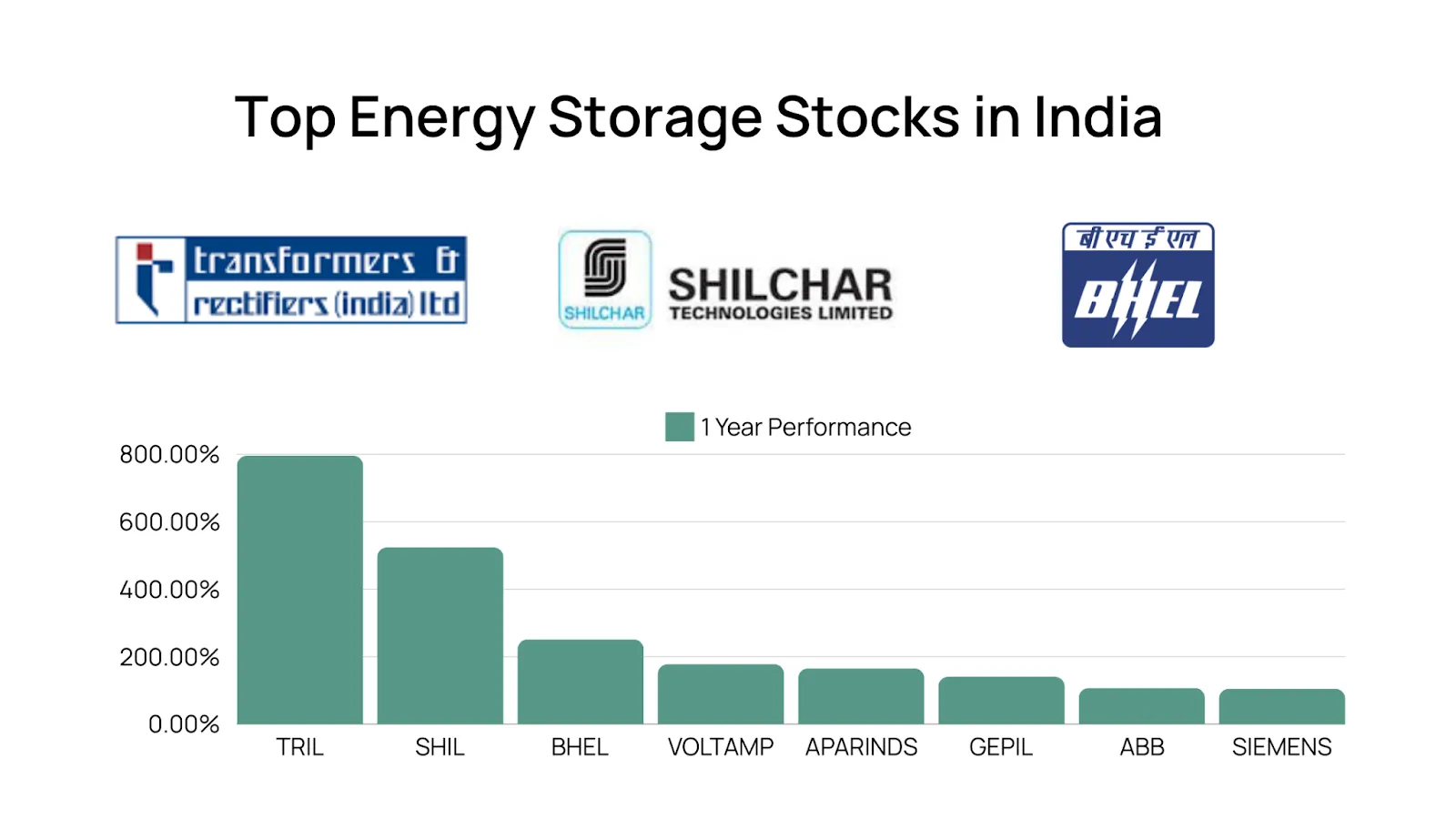
This comprehensive value chain highlights the critical components and key players involved in generating, transmitting, distributing, and storing renewable energy in India. Each segment plays an integral role in ensuring the successful transition to a sustainable energy future.
Job Creation in the Renewable Energy Sector The renewable energy sector has the potential to create millions of jobs in various segments, from manufacturing and installation to operation and maintenance. This surge in employment opportunities can significantly contribute to the economic growth and development of regions where renewable energy projects are implemented.
Enhanced Energy Security through Renewable Sources By increasing the share of renewable energy in its energy mix, India can reduce its dependence on imported fossil fuels. This shift enhances national energy security, making the country less vulnerable to global energy market fluctuations and geopolitical tensions.
Reduction in Greenhouse Gas Emissions Transitioning to renewable energy sources is crucial for reducing greenhouse gas emissions. This reduction helps combat climate change, improves air quality, and promotes public health. The adoption of cleaner energy sources aligns with global climate goals and commitments.
Technological Advancements in Renewable Energy Continuous technological innovations are driving the renewable energy sector forward. Advancements in solar panels, wind turbines, and energy storage solutions are improving efficiency, reducing costs, and enhancing the viability of renewable energy projects.
Attraction of Foreign Investments India’s ambitious renewable energy targets are attracting significant foreign investments. International companies and investors are keen to participate in India’s growing green energy market, bringing in capital, technology, and expertise.
Cost Competitiveness of Renewable Energy As technology matures and economies of scale are achieved, the cost of renewable energy is becoming increasingly competitive with traditional energy sources. This cost reduction incentivizes further adoption and integration of renewable energy into the national grid.
Potential for Market Leadership in Renewable Energy Technologies India has the potential to become a global leader in renewable energy technologies. By investing in research and development, India can innovate and lead in the development of cutting-edge renewable energy solutions, positioning itself as a key player in the global market.
Dependence on Government Policies and Investments The renewable energy sector is heavily reliant on supportive government policies and investments. Changes in political leadership or policy direction can create uncertainty and impact the growth of the sector.
Capital-Intensive Nature of Renewable Energy Projects Renewable energy projects require significant capital expenditure for infrastructure development, technology acquisition, and project implementation. Securing financing can be challenging, especially for large-scale projects.
Intense Market Competition The renewable energy market is highly competitive, with numerous players vying for market share. This competition can lead to margin pressures and financial instability for companies unable to keep pace with technological advancements and cost reductions.
Variability of Renewable Energy Resources Renewable energy sources like solar and wind are inherently variable and dependent on weather conditions. This variability can pose challenges for grid integration and ensuring a stable and reliable power supply.
Land Acquisition Challenges Acquiring land for renewable energy projects, especially in densely populated or agriculturally productive areas, can be challenging. Conflicts with local communities and regulatory hurdles can delay project implementation.
Need for Significant Upgrades in Transmission and Distribution Infrastructure The existing transmission and distribution infrastructure requires substantial upgrades to handle the integration of large-scale renewable energy sources. Investments in smart grids, transmission lines, and substations are necessary to ensure grid stability.
Policy and Regulatory Uncertainty Frequent changes in policies and regulations can create uncertainty for investors and project developers. Consistent and transparent policy frameworks are essential for fostering investor confidence and long-term sector growth.
Ensuring Financial Viability of Renewable Projects While renewable energy costs are declining, ensuring the long-term financial viability of projects remains a challenge. Innovative financing models and government support are needed to make renewable projects economically sustainable.
Dependence on Imports for Critical Components India relies on imports for critical components like solar cells and wind turbine parts. Developing a robust domestic manufacturing ecosystem is essential for long-term sustainability and cost competitiveness.
Impact of Climate Change on Renewable Energy Infrastructure Climate change can introduce new challenges, such as extreme weather events that can damage renewable energy infrastructure and disrupt generation. Building resilient infrastructure is crucial for mitigating these risks.
India's Target of 500 GW of Renewable Energy Capacity by 2030 India aims to achieve 500 GW of installed renewable energy capacity by 2030, a significant increase from the current capacity. This ambitious target reflects India’s commitment to a clean energy transition and positions the country as a leader in the global renewable energy market.
Significance of These Targets for India's Energy Security and Climate Goals Achieving these targets will enhance India’s energy security by reducing dependence on fossil fuels and lowering carbon emissions. This shift is critical for meeting global climate commitments and promoting sustainable economic growth.
Development of Green Hydrogen Production India is exploring the potential of green hydrogen production using renewable energy sources. Green hydrogen can be used in various sectors, including transportation and industry, offering a clean alternative to fossil fuels.
Advancements in Battery Storage Solutions Energy storage solutions, such as lithium-ion batteries, are crucial for integrating variable renewable energy sources into the grid. Advancements in storage technology improve grid stability and reliability, making renewable energy more viable.
Potential for Offshore Wind Energy India has a vast coastline with significant potential for offshore wind energy. While technological and infrastructural challenges exist, offshore wind farms could substantially contribute to India’s renewable energy capacity.
Government Initiatives to Promote Domestic Manufacturing The Indian government is promoting domestic manufacturing of solar panels and wind turbines to reduce dependence on imports and create jobs. Initiatives like production-linked incentives (PLIs) are attracting investments in solar and wind component manufacturing.
Production-Linked Incentives (PLIs) for Solar and Wind Component Manufacturing PLIs are designed to incentivize companies to establish and expand manufacturing facilities for solar and wind components in India. These incentives aim to build a self-reliant green energy ecosystem, enhance technological expertise, and potentially lower costs.
India's renewable energy sector is witnessing significant growth, driven by ambitious government targets, technological advancements, and increasing investments. The transition to renewable energy is crucial for enhancing energy security, reducing greenhouse gas emissions, and promoting sustainable economic growth. Despite the challenges and risks, the opportunities in the renewable energy sector are immense. Continued investment, innovation, and supportive policies will be essential for achieving India’s renewable energy goals and positioning the country as a global leader in the clean energy transition.
Investors, policymakers, and stakeholders must collaborate to overcome challenges and capitalize on the opportunities presented by renewable energy. By doing so, India can ensure a sustainable and prosperous future for its citizens and contribute to global efforts to combat climate change.
Also Read:
Discover investment portfolios that are designed for maximum returns at low risk.
Learn how we choose the right asset mix for your risk profile across all market conditions.
Get weekly market insights and facts right in your inbox
It depicts the actual and verifiable returns generated by the portfolios of SEBI registered entities. Live performance does not include any backtested data or claim and does not guarantee future returns.
By proceeding, you understand that investments are subjected to market risks and agree that returns shown on the platform were not used as an advertisement or promotion to influence your investment decisions.
"I was drawn to Wright Research due to its multi-factor approach. Their Balanced MFT is an excellent product."

By Prashant Sharma
CTO, Zydus
By signing up, you agree to our Terms and Privacy Policy
"I was drawn to Wright Research due to its multi-factor approach. Their Balanced MFT is an excellent product."

By Prashant Sharma
CTO, Zydus
Skip Password
By signing up, you agree to our Terms and Privacy Policy
"I was drawn to Wright Research due to its multi-factor approach. Their Balanced MFT is an excellent product."

By Prashant Sharma
CTO, Zydus
"I was drawn to Wright Research due to its multi-factor approach. Their Balanced MFT is an excellent product."

By Prashant Sharma
CTO, Zydus
Log in with Password →
By logging in, you agree to our Terms and Privacy Policy
"I was drawn to Wright Research due to its multi-factor approach. Their Balanced MFT is an excellent product."

By Prashant Sharma
CTO, Zydus
Log in with OTP →
By logging in, you agree to our Terms and Privacy Policy
"I was drawn to Wright Research due to its multi-factor approach. Their Balanced MFT is an excellent product."

By Prashant Sharma
CTO, Zydus
Answer these questions to get a personalized portfolio or skip to see trending portfolios.
Answer these questions to get a personalized portfolio or skip to see trending portfolios.
(You can choose multiple options)
Answer these questions to get a personalized portfolio or skip to see trending portfolios.
Answer these questions to get a personalized portfolio or skip to see trending portfolios.
Answer these questions to get a personalized portfolio or skip to see trending portfolios.
(You can choose multiple options)
Investor Profile Score
We've tailored Portfolio Management services for your profile.
View Recommended Portfolios Restart